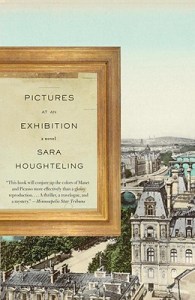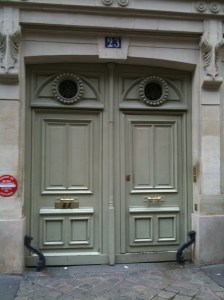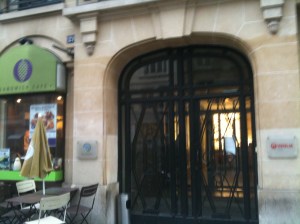The recent anniversary of D-Day has put me on a reading streak of WWII related books. My favorite is All The Light We Cannot See by Anthony Doerr. (You can read my earlier review and see my photographs of its setting in St-Malo here.) One of the most powerful insights from the book was the realization of how much damage the Allies caused as they forced the Germans out of St-Malo.
An Alliance Francaise teacher recently shared with me a line she recalled from her parents: “Nous aimons les Américains. Mais nous aimerions qu’ils encore plus si ils ont bombardé un peu moins.” (We like the Americans. But we would like them even more if they bombed a little less.)
 Spurred on by these insights, I was drawn with great curiosity to this book: D-Day Through French Eyes: Normandy 1944 by Mary Lousie Roberts (University of Chicago Press 2014). The book is based on first-person testimony by French people who lived in Normandy in June of 1944. It’s absolutely fascinating to hear their stories.
Spurred on by these insights, I was drawn with great curiosity to this book: D-Day Through French Eyes: Normandy 1944 by Mary Lousie Roberts (University of Chicago Press 2014). The book is based on first-person testimony by French people who lived in Normandy in June of 1944. It’s absolutely fascinating to hear their stories.
Paratroopers fell into family gardens and farmers’ fields and were welcomed into French farmhouses, regardless of the danger. Norman families gathered up the silk parachutes and later used them to make shirts, blouses and even wedding dresses. As Roberts put it: “In the next few years, hundreds of Norman brides would be married in dresses made from that material.”
But the truth is much more complicated. Liberation came at great cost. Nineteen thousand civilians were killed during the Norman invasion. The towns of LeHavre, Caen and Saint-Lo became “martyred towns, almost completely wiped off the map.” These towns were key transportation routes for advancing German troops and the Allies were determined to destroy their bridges and roads. The Allies dropped leaflets to warn the occupants of these targeted towns, but they often had nowhere else to go. Bomb shelters were rare in France, unlike England. The Normans hid under tables or mattresses and prayed the rosary while “friendly” bombs fell and their homes were destroyed. By the time Caen was liberated, just one-quarter of the town was still standing.
In a chapter called “First Glimpse,” the French share their first impressions of the American soldiers. They were all amazed at their height and size – they called the Americans “giants,” “beanpoles,” “strapping fellows.” They noticed the Americans’ silent rubber boots, so different from the loud sound of German boots they’d become accustomed to.
Norman children fondly recalled American soldiers who gave them their first Hershey bars and their chewing gum. They thought the “brownish-beige chocolate . . . tasted funny,” and didn’t really know what chewing gum was. “Do you just keep on chewing?” Many Norman children were fatherless during the war, so they bonded quickly with the American soldiers who befriended them, playing soccer and basketball. The adults marveled at “thin” Lucky and Camel cigarettes wrapped so neatly in cellophane. The French noticed that German soldiers smelled like leather, soap and tea, but American soldiers smelled like peppermint, doughnut and American tobacco.
These are just a few of the many well-told first-person stories in D-Day Through French Eyes. They offer a refreshing and sobering point of view for Americans who are more accustomed to looking at the world through their own eyes. We should probably try it more often, n’est-ce pas?











You must be logged in to post a comment.